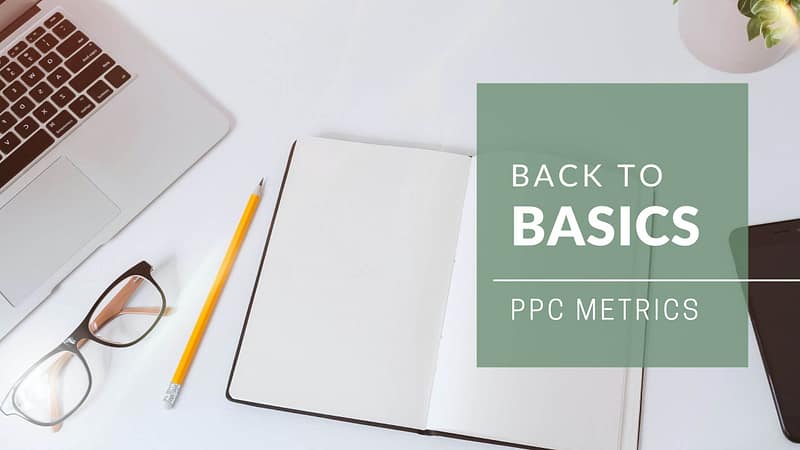From the first Pay-Per-Click (PPC) campaign you create, you tend to come across the same keywords time and time again. This is why it’s important to be familiar with these keywords. Our back-to-basics series is here to do just that.
In the first of our back-to-basics series, we will be talking about a few different PPC metrics that can be used to monitor the success or failure of your campaigns. If any faults are then identified, it gives you the chance to make any necessary changes. With the amount of PPC metrics that are available to track, you want to first start with the metrics that best match the goals of the business.
Clicks
Clicks refer to the total number of times a potential customer clicks on your ad. Since a potential customer is typically taken to your website or landing page once clicking on your ad, tracking the clicks metric is important when your goal is increasing traffic to your website or increasing brand awareness.
While viewing this metric, dips in your click volume can provide insight that something may need to be changed within your ad campaign. Alternatively, determining where search volumes are increasing means you can focus your budget in those areas for the most potential reach.

Cost per Click (CPC)
Cost per click (CPC) refers to the amount that you pay for each click your paid ad receives. However, the amount that you pay for each click is not standard. Bids are made for the keywords that cause an ad to be triggered on the Search Engine Results Page (SERP) and vary in cost based on demand. Your quality score can also influence the total amount you will pay per click.
To determine your average CPC, divide the total cost of your clicks by the total number of clicks.

Click-Through Rate (CTR)
Click-Through Rate (CTR) refers to the rate at which your ad is clicked on in proportion to the number of times it was shown. The amount of times your ad is shown is also referred to as impressions. Your CTR can help you determine the success of your ad campaign when used with specific keywords.
To determine your CTR, divide the number of clicks your ad has received by the total number of impressions that it received.

Quality Score
We mentioned earlier that your quality score could impact the amount that you will pay for each click, but what is it? Quality score refers to the 1-10 score Google gives based on your expected CTR, the relevance of your ad, and landing page experience. Higher quality scores mean you can typically win bids at a lower cost. Google wants to provide the best experience for its users, and those with higher quality scores have proven they can provide relevant and quality ads for users.
For more information on quality scores (and the different types), check out our post on Google Ads & Quality Scores!
Up next in our back-to-basics series, we will be discussing even more PPC metrics since we have only scratched the surface!
Whether this is your first or hundredth PPC campaign, a free consultation can be the first step in getting the most out of your campaigns. Reach out to our team of PPC experts today for your free consultation!




